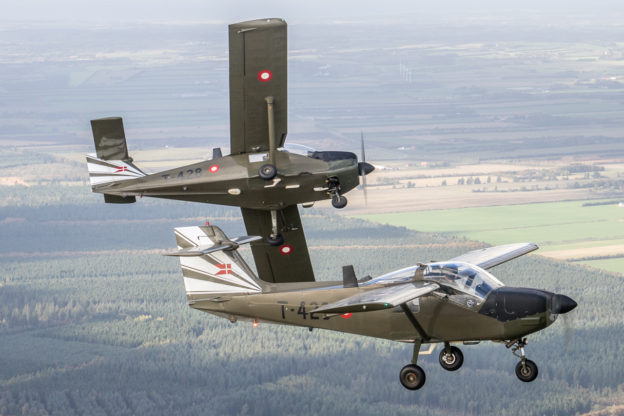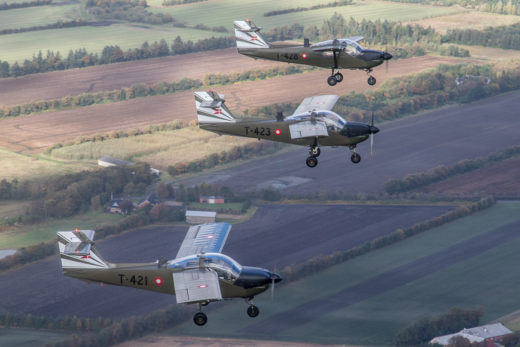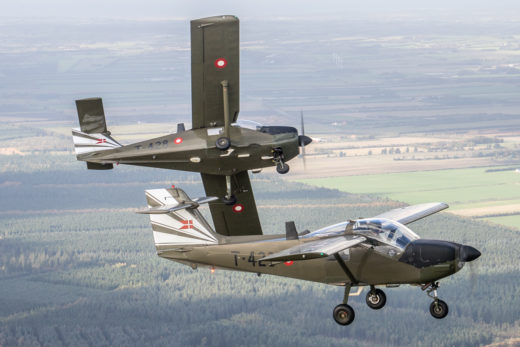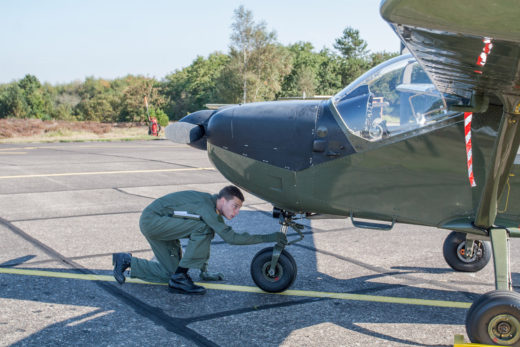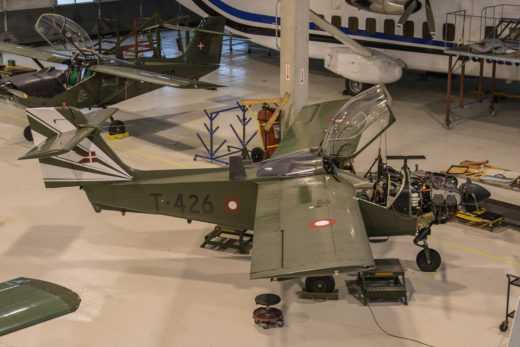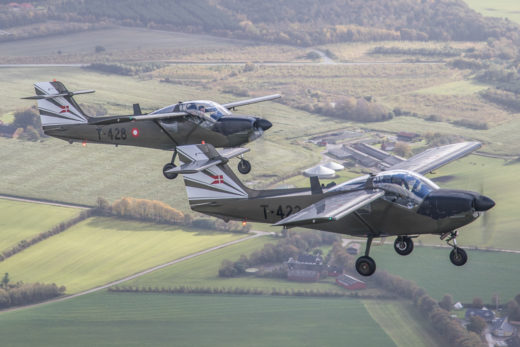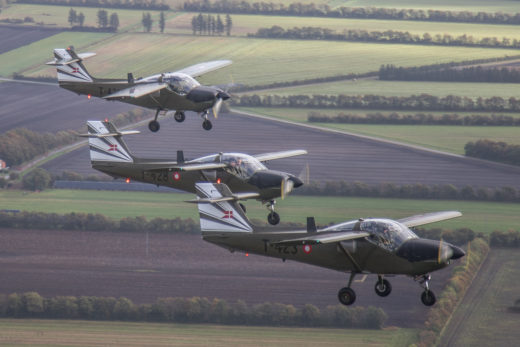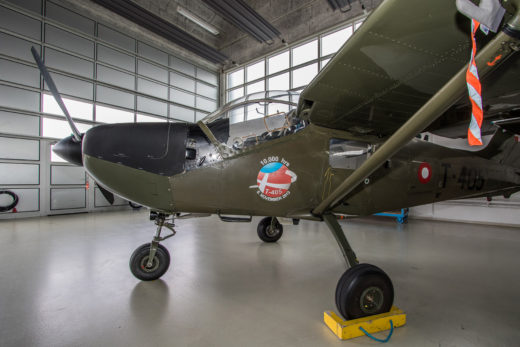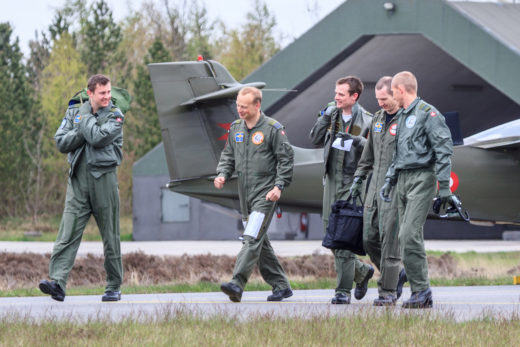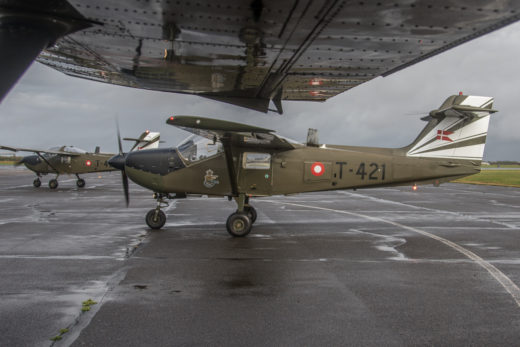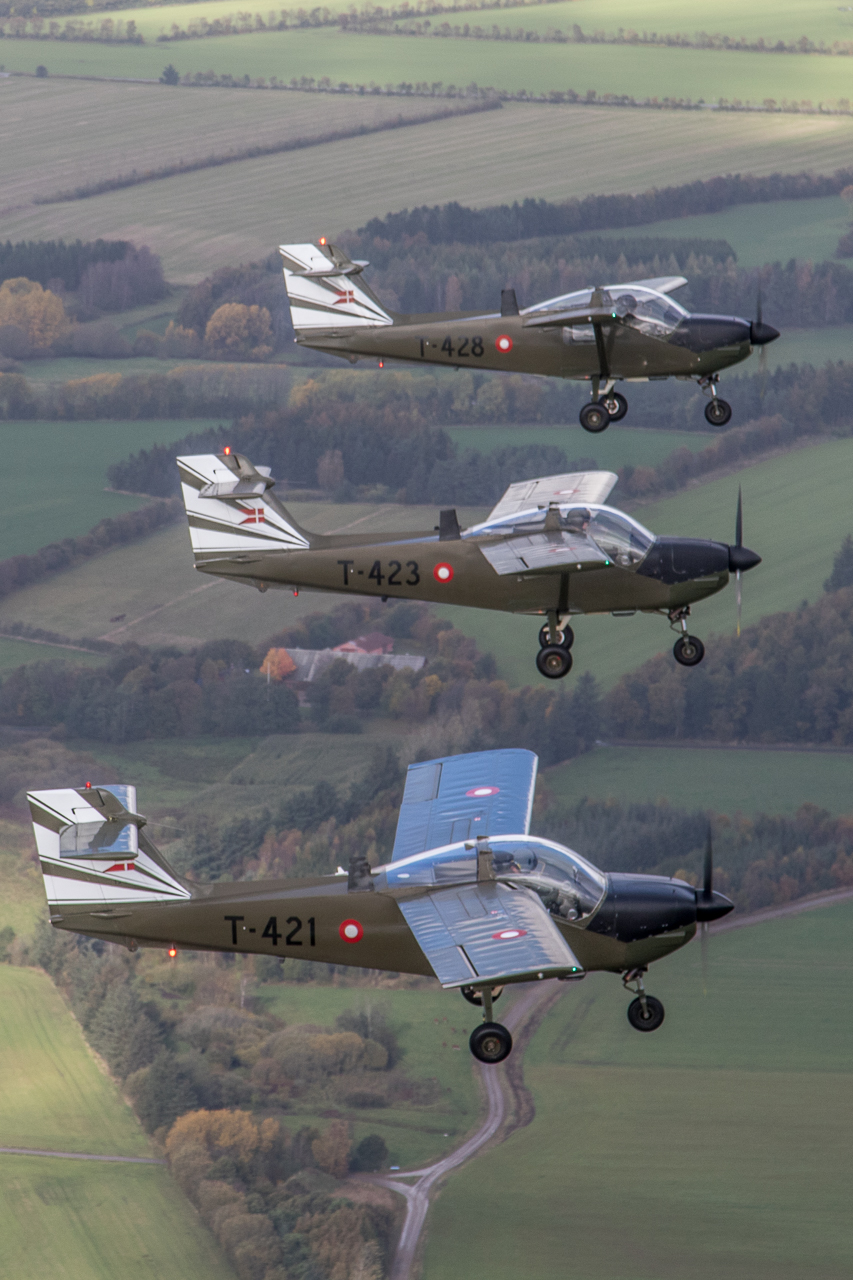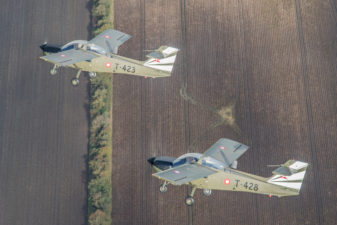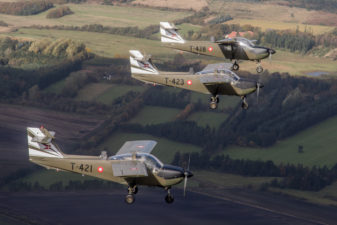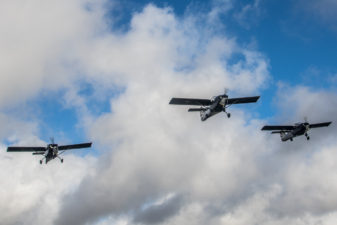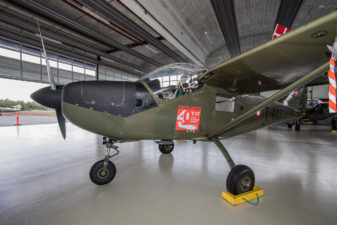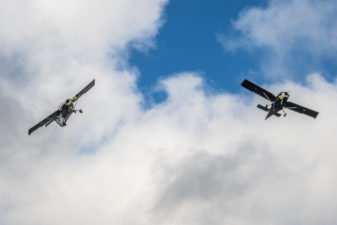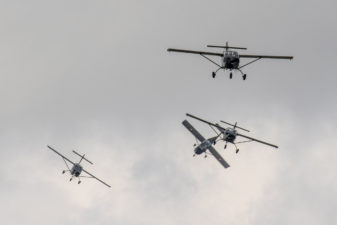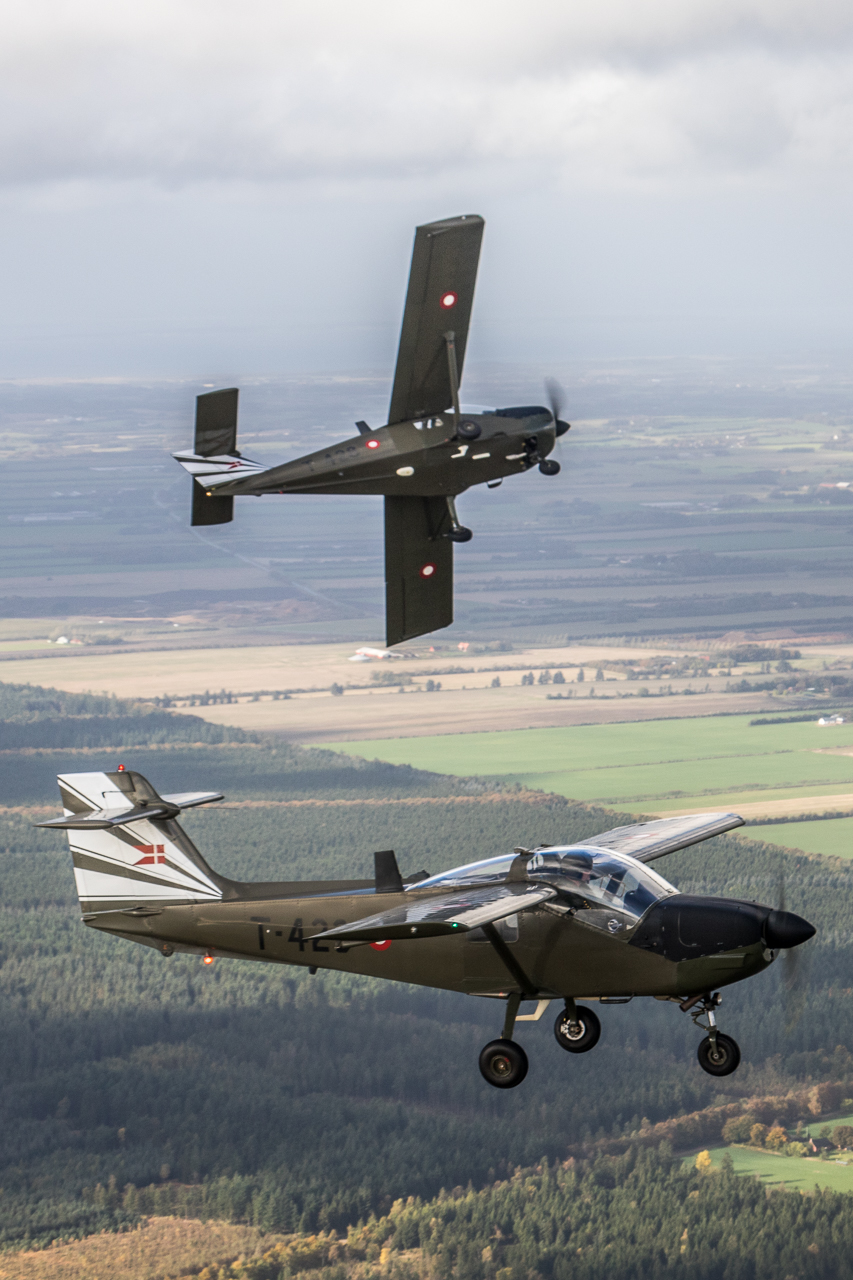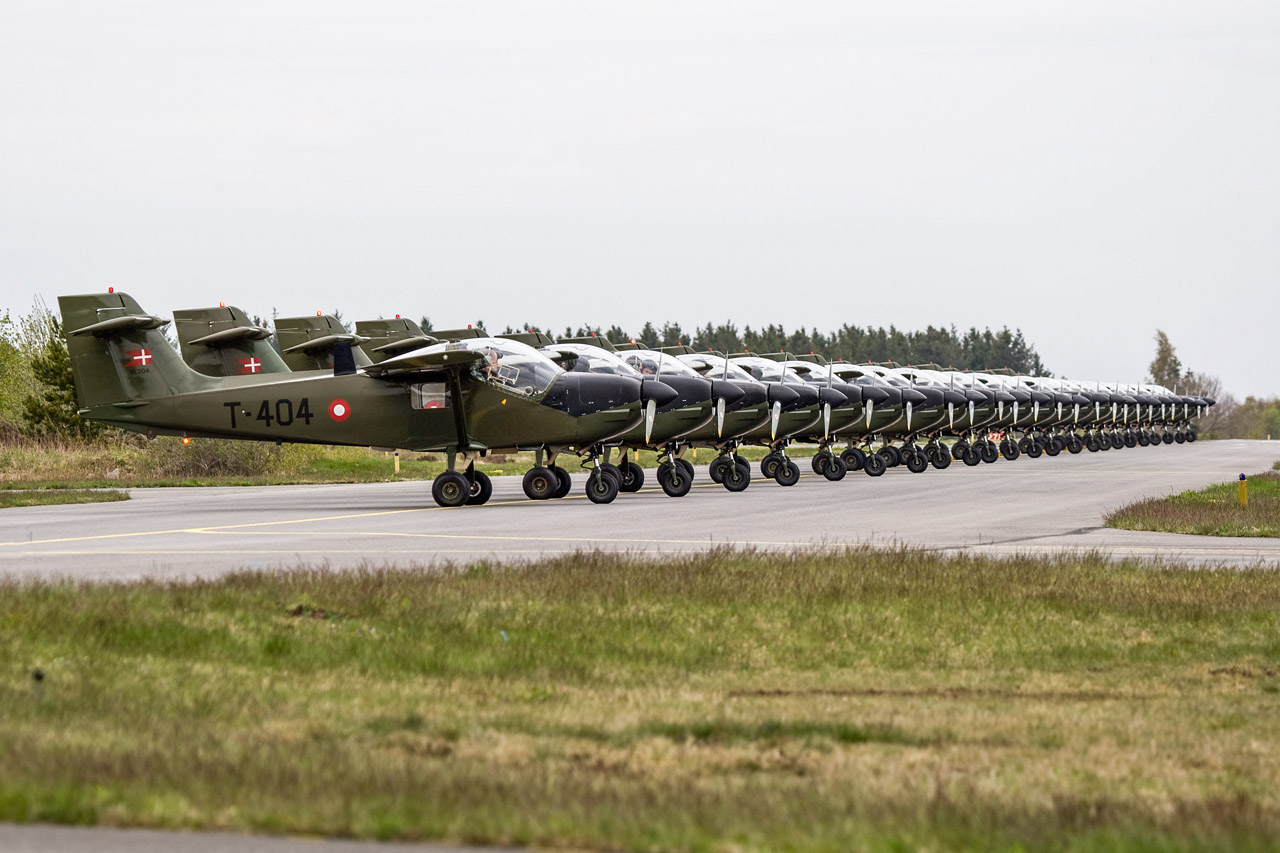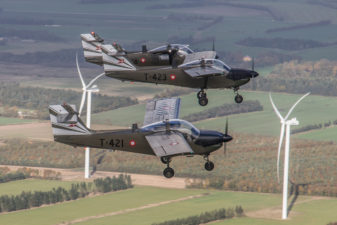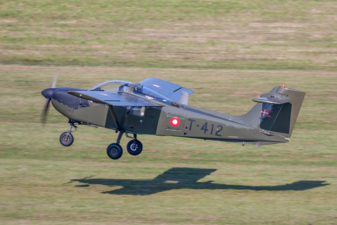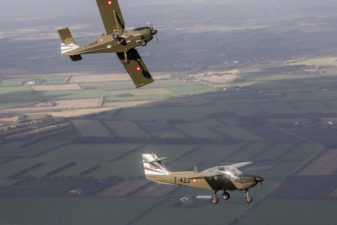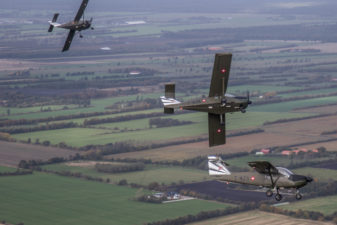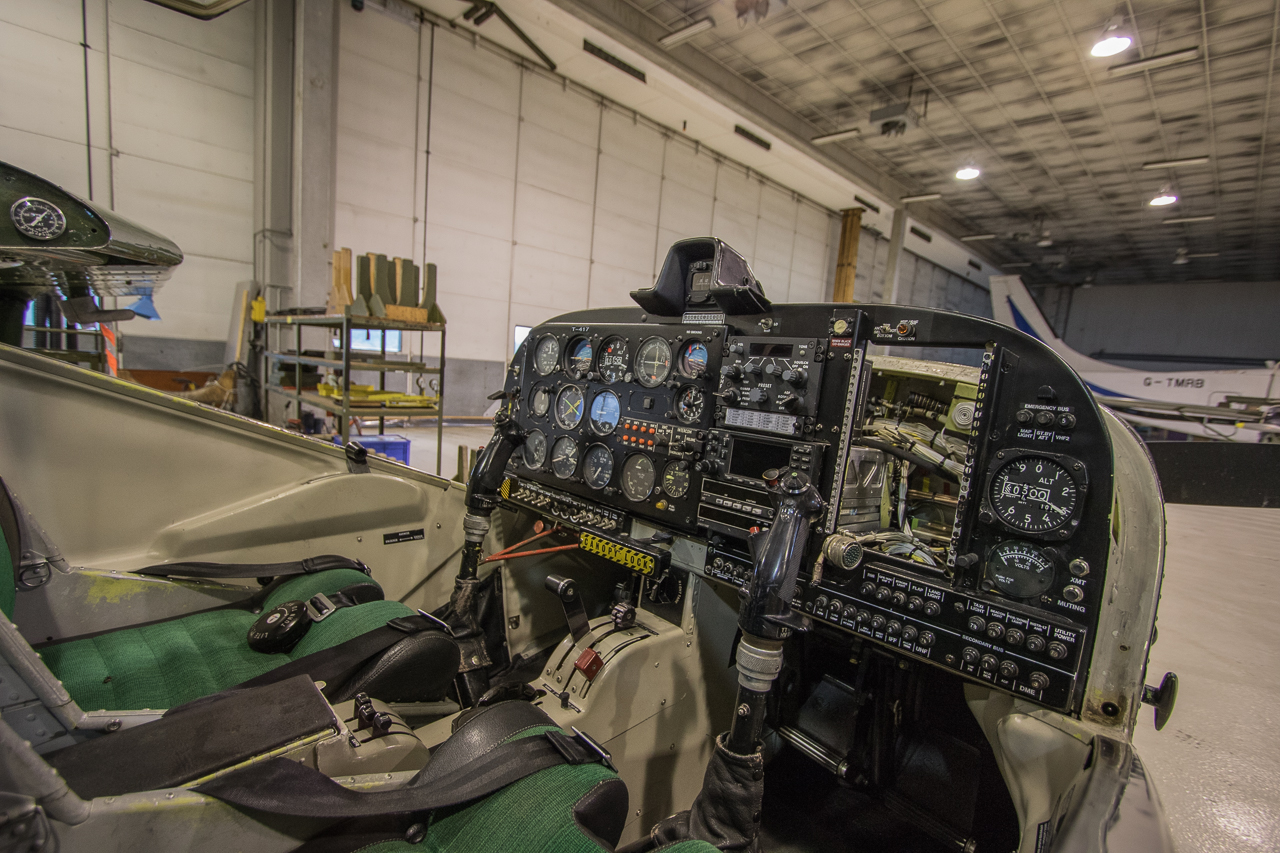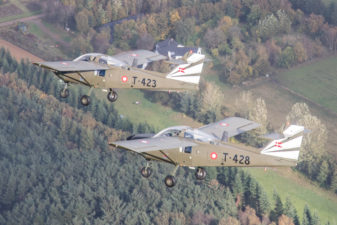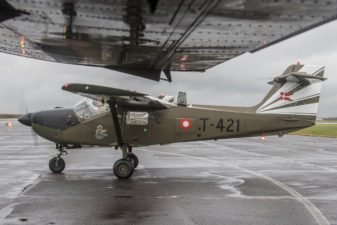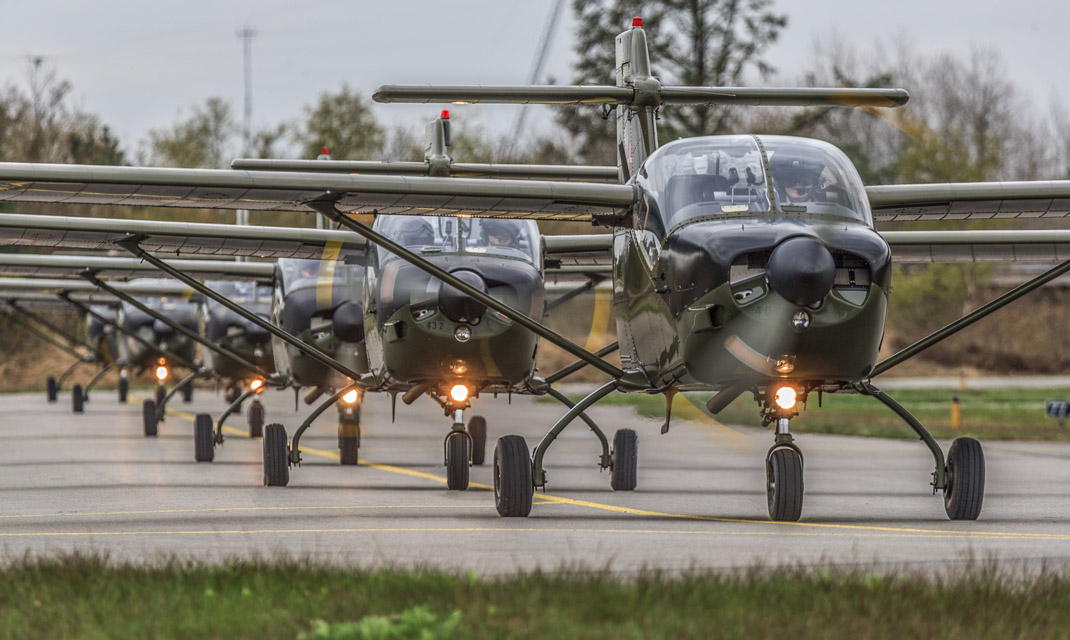
Pilotschool at FSN Karup
For more than 40 years, the SAAB T-17 Supporter has fulfilled various roles in the Royal Danish Air Force.
|
Danish Basic Trainer
For more than 40 years, the SAAB T-17 Supporter has fulfilled various roles in the Royal Danish Air Force.
The selection
In the early 1970s, the Royal Danish Air Force (RDAF) started searching for a replacement for the KZ 7, Piper Cub and Chipmunk aircraft, which at the time were being used as basic trainers for pilots in all the branches of the Danish Armed Forces. Three types were selected as potential candidates; the Scottish Aviation Bulldog, the SAAB MFI-17 Supporter and the New Zealand build CT-4 from the Pacific Aerospace Corporation. During August and September of 1973 each of the three types spent a week at Vandel Air Base where representatives from all the branches of the Danish armed forces tested them with support from test pilots from each of the three manufacturers.
During flight-testing of the SAAB MFI-17, the Danish pilots had some questions that the Swedish factory pilots couldn’t answer. They wanted to know what would happen if the canopy, which is hinged behind the pilot and opens up and backwards, accidentally opened during flight. Would the canopy fall off and strike the T-tail of the aircraft causing it to crash, or would it stay in place? And if it stayed in place, would the pilot be able to land safely? |
|
|
|
|
|
COMPREHENSIVE TEST PROGRAM
To find out, an MFI-17 was equipped with a safety device, which made sure that if the canopy fell off when opened in flight, it would not strike the tail. One of the Swedish factory pilots then had to open the canopy, on purpose, in mid-flight to find out if it would stay attached to the airframe. The test went well and the hinges held!! The canopy laid flat against the top of the fuselage and the pilot was able to land without problems.
After a comprehensive test program, where the three candidates were put through their paces by both the factory pilots and pilots from the RDAF and the Army Air Corps, the Swedish SAAB MFI-17 Supporter was selected. There were several reasons why the MFI-17 was chosen. The aircraft’s high-wing construction, the only one of the three aircraft tested, meant that it was more stable during slow flight. The aircraft was also very easy to maintain and the airframe was strong enough to make take off and landings on grass and dirt strips possible. |
|
|
|
|
|
SAAB T-17 Supporter
The SAAB T-17 Supporter, as it became known in Denmark, is of high-wing construction with an all-metal fuselage, which makes it very strong. The aircraft can carry two or three people, depending on the internal configuration. The cockpit has two seats for a pilot and navigator or a student pilot and an instructor, seated in a side-by-side configuration. In the cargo compartment behind the two pilots, an extra seat can be fitted and it is then possible for a passenger to squeeze into the back.
The T-17 is equipped with a fixed tricycle landing gear and skis can be added for landing in snow. The engine is a Lycoming 10-360-A1B6 which produces 200 HP. The power from the engine is transferred to a Hartzell constant speed propeller which gives the aircraft a top speed of 146 mph (236 kph). The aircraft has the following technical data:
Delivery of the new aircraft
After the decision was made to purchase the SAAB T-17 Supporter, 25 million Danish Kroner (approximately £2.5 million), was allocated to purchase thirty two aircraft. The order, which apart from the 32 aircraft, also included training of mechanics and maintainers, was given to SAAB in January 1975.
On 11 September the same year, the first aircraft, serial number T-401, arrived at Vandel Air Base. The remaining thirty one aircraft arrived during the next sixteen months with the last aircraft, serial number T-432, arriving at Vandel Air Base on the 5 January 1977. |
“The engine is a Lycoming 10-360-A1B6 which produces 200 HP. The power from the engine is transferred to a Hartzell constant speed propeller which gives the aircraft a top speed of 146 mph (236 kph).”
|
|
|
|
|
Army Air Corps
The thirty two aircraft were split between the “Flyveskolen” (Flight School) which received fifteen, the “Hærens Flyve Tjeneste” (Army Air Corps) which received nine and the remaining eight were split between the various air bases as Station Flights.
In the Army Air Corps the T-17s were used in many different roles, including:
|
|
|
|
|
|
STRATEGIC CHANGE
The T-17 high-wing construction and large canopy give great downward visibility from the cockpit, which was a great benefit in many of the roles the Army Air Corps flew.
The T-17 can be equipped with six hard points, three under each wing, and it can carry a total of 300 kg of payload. Among the weapons that can be attached to the hard points are up to 14 7.5’’ air-to-ground rockets, two Borfos Bantam wire-guided anti-tank missiles and various free-fall bombs. A number of live fire tests were conducted, but they showed that the T-17 was not a very stable weapons platform. It was decided to stop using it as a weapons delivery platform. The high-wing and T-tail construction gives good ground clearance and the aircraft can be used on both grass and gravel. The aircraft does however have a relatively weak nose wheel construction and if it strikes a molehill or other small obstruction during take-off or landing, there is a high probability of the nose wheel collapsing. In 2003 Vandel Air Base was closed and the Army Air Corps was disbanded at the same time. The Army Air Corps AS 550 Fennec helicopters were transferred to 724 Squadron in the RDAF, based at what is now known as Helicopter Wing Karup. The T-17s were handed over to the Flying School. Flyveskolen
When the RDAF flight school (Flyveskolen) received its first fifteen T-17 Supporters it was located at Avnø Air Base. In 1993 Avnø Air Base was closed and the flight school was moved to Karup Air Base, which today is known as Helicopter Wing Karup.
As a primary trainer, the T-17 is a very forgiving plane which, due to great stability during all speeds, allows inexperienced pilots to make mistakes without bringing the aircraft into a critical situation. The side-by-side cockpit layout enables the instructor pilot to monitor the student pilot during the entire flight and ensures good and easy communication. |
Evaluation of the students
While the student pilots attend the Flyveskolen, they fly approximately twenty seven hours and twenty minutes in the T-17. Their total flight time depends on weather conditions and other factors that might prolong or shorten some flights.
The primary job of the Flyveskolen is not to teach the student pilots to fly. It is more of a selection process where the instructor pilots have to evaluate each student pilot and test if they are capable of completing the training in the USA following the Flyveskolen. Not only does a student have to have the ability to learn a large amount of information in a short time, they also have to have the correct personality in order to fit in and function in one of the squadrons of the RDAF once they complete their training. |
|
|
|
|
A modern glass cockpit
When originally designed by SAAB, the T-17 had very basic cockpit instrumentation. This was however upgraded in the T-17s delivered to the RDAF, largely to meet the demands set by the Army Air Corps with regards to communications equipment. Since delivery, the cockpits have been further upgraded in order to give the student pilots more representative modern instrumentation.
Now that all the RDAF F-16s have been upgraded to MLU standard, new C-130J-30 have been purchased and the soon-to-be-delivered SH-60 Seahawk helicopters arrive, the vast majority of the types used by the RDAF are equipped with modern glass cockpits. Plans have therefore been drawn up to upgrade the cockpit of the T-17s once again. This time with a modern glass cockpit to better prepare the student pilots for the aircraft they will eventually fly. So far the upgrade is only in the planning stages and no firm decisions have been made. |
Baby Blue
For many years it has been a tradition that aircraft from the Flyveskolen, performs a flypast at Svinøkirke at sunset on 4 May in conjunction with the memorial service held to mark the Danish liberation during World War II. The fly-past consists of four aircraft flying over the church in Finger Four formation, before returning to perform a Missing Man routine to honour fallen allied pilots. The call sign for this formation is Baby Blue.
These fly-pasts inspired some of the instructor pilots to rehearse close formation flying when their daily duties allowed it and soon after the Flyveskolen was capable of displaying four aircraft in close formation at special events. In the mid-80s they were able to perform a small T-17 formation display. A number of former F-104 Starfighter pilots, now instructors, wanted to take the concept further and together with a former F-100 Super Sabre pilot, they developed a show display programme. The programme was approved by the Tactical Air Command and in the following years the team, named Baby Blue of course, flew at RDAF Open House air shows and various other events. However, as the four instructor pilots left the Flyveskolen, the Baby Blue project came to a halt. |
|
|
|
|
The move to Karup
In 1993, when the Flyvekolen moved to Karup, it coincided with the withdrawal of the F-35 Draken also based at Karup. This meant that a large number of ex-Draken pilots joined the Flyveskolen as instructors and they were keen to restart the Baby Blue project. One of the pilots originally involved in the Baby Blue project was now the Operational boss of the Flyveskolen and thus the project was revived.
The new instructor pilots had many new ideas for the display routine, but a number of them had to be abandoned when they realised that they could not take maneuverers flown in the Draken and transfer them directly to the T-17. They did however mange to put together a display routine that was far more advanced that the one flown in the 80’s. The new routine was approved by the Tactical Air Command again and the Flyveskolen was once again able to supplement their solo T-17 display with a four ship formation team. Baby Blue is now a firm fixture at all Danish Air shows and even travel abroad for air shows when the opportunity arises. Service and maintenance
In the forty years that the T-17s have been in RDAF service, they have accumulated over 200,000 flight hours. This milestone was reached in 2010 and was marked with a small ceremony at HW Karup on 7 May 2010 when most of the remaining T-17s were gathered. On the 6 November 2013, T-17 serial number T-405 was the first airframe to reach 10,000 flight hours.
However, there is a large spread in the number of flight hours that each T-17 has accumulated, the reason dating back to the time when the fleet was split between the Flight School and the Army Air Corps. Back then there were no common maintenance and rotation plan to even out the flight hours. |
“The new routine was approved by the Tactical Air Command again and the Flyveskolen was once again able to supplement their solo T-17 display with a four ship formation team.”
|
|
|
|
|
Stationflight
Today all T-17s are maintained by a team of dedicated mechanics and technicians. For many years a private company, Danish Aerotech, had the job of maintaining the T-17 fleet in a hangar at HW Karup. Shortly before Christmas 2015 the company went bankrupt and closed down.
This meant that the RDAF were suddenly without maintainers for their T-17s. The Danish Material Command took over the responsibility for maintaining the T-17 fleet and they quickly hired all the former Danish Aerotech employees. As the bankruptcy happened just days before Christmas and the need for T-17s was low, it did not have a significant impact on the day-to-day operations of the Flight School or on the other air bases using the T-17s for station flights. The two other RDAF bases, Fighter Wing Skrydstrup and Air Transport Wing Aalborg, typically have three T-17 as station flights. The technicians at the two bases are responsible for the daily maintenance and the fifty and one hundred flight hour’s checks. |
|
|
|
|
|
Celebrating 40 years in service
When a T-17 is getting near the more complicated two hundred flight hours check it is flown back to HW Karup and swapped for a “fresh” T-17 which has just been through the two hundred hour check. This means that the flight hours are now spread evenly amongst all the airframes.
With the T-17s robust construction and relative low number of flight hours each year, they are scheduled to remain in service with the RDAF for many years to come. To celebrate the T-17s 40th anniversary, a reception was held at the Flight School on the 11 September 2015. A number of special guests were invited including former instructors, former Army Air Corps pilots and the Danish and Swedish test pilots who first test flew the T-17 at Vandel Air Base. During the reception the current boss of the Flight School, pilot name HIR, unveiled a special design to mark the occasion. It was applied to T-17 serial number T-401, the first T-17 delivered to the Royal Danish Air Force back in 1975. FLYMAG would like to thank Sgt. Ole Jørgensen and the boss and instructors at the Flight School for their help in making this article possible. |
|
|
|
|

